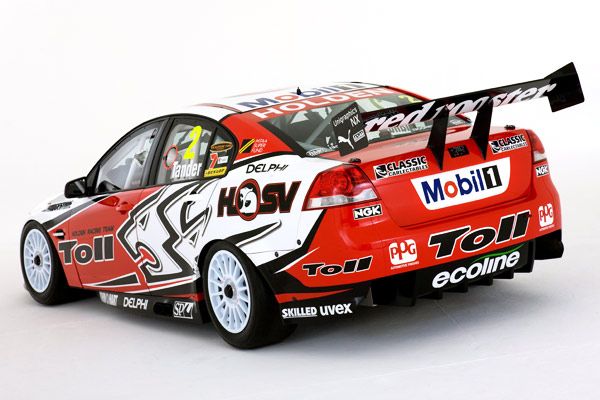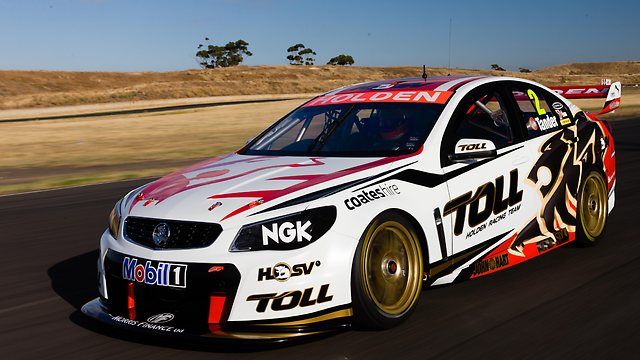 02-17-2013, 05:21 AM
02-17-2013, 05:21 AM
|
#23 (permalink)
|
|
EcoModding Lurker
Join Date: Jan 2011
Location: nsw australia
Posts: 34
Thanks: 0
Thanked 14 Times in 12 Posts
|
Holden will use a new rear wing in V8 Supercars in 2013. It sees a return to the end mounted supports Holden last used back on the VP Commodore. Here's the designer of the wing talking about it.
Quote:
There's been a lot of chat about that rear wing. And let's be honest, there are only so many Ford jibes a Holden man can take so we took the liberty to track down the designer - eccentric, bike-mad Frenchman Ludo Lacroix.
Ford's rear wing has been superior for a number of years and when the Triple Eight lads made the switch from the dark side, they brought a few secrets with them.
Put simply, had the Commodores had this kit last year then FPR would have stood as much a chance of battling for the title as an under-14s kart racer.
To get the full low down, pull up a seat, order a stack of crepes and enjoy Ludo's explanation of the most advance aero kit in V8 Supercars history.
Red Bull Racing Australia: Ludo, a lot of long-time Holden fans have been blowing up about the new rear wing. Why have you guys ditched the twin posts in the middle of the boot?
Ludo Lacroix: The new rear wing of the VF has a bit of the look of an old Ford but that's probably because the same person is doing both cars! Haha. The aerodynamic doesn't change because of the brand, the aerodynamic is a bit better with that sort of wing, so I think that Holden needed to move onto that sort of endplate, which is more like on aeroplanes. It's actually giving us a little more efficiency in drag which means the car can actually slide a little bit more without losing too much rear down force.
RBRA: Do all the new cars across the field carry the same aero package this year?
LL: Technically it is the same aero package because the tests are done in a straight line. Now, the actual behaviour of an aero package obviously is not only in a straight line but in cornering and what the engineers are trying to do is get the best behaviour possible in the corners. That can't be tested. It's near impossible to be tested apart from the driver on a track with tyres. So what you try to do is achieve the same number in a straight line (as the rival makes) but make sure that your car actually in the corner has got a better number. But that cannot be checked fairly because of so many different variables - temperature, wind, driver, tyres. Every engineer or every manufacturer is trying to get the best through the corner once it's been checked in a straight line.
RBRA: How will the new aero package affect racing and lap times this year?
LL: The aero package is responsible for about two tenths of a second per lap. A V8 Supercar is not an aerodynamic car. They've got a bit of aerodynamic, but they are mainly mechanical cars and they are reacting on the track as mechanical cars, so the aerodynamic effect is very small. If we've changed a little bit of the aerodynamic of the cars in general, it will have a very small effect, so what I say is probably one tenth to two tenths quicker due to the aero.
RBRA: How was the rear wing tested?
LL: It's all on a computerised wind tunnel and then basically on the track, basic straight lines and trying to measure the down force. We put blue markers on the car and then you can see whether the air is pushing or not.
RBRA: Ok, for those of us who aren't rocket scientists, please explain the difference between the VE2 wing and the VF...
LL: The wing is actually shorter - the VE wing was 1450mm, this is 1400mm because we decided that we didn't want to have the wing hanging too far outside the car. When you're on a street circuit you are close to the wall and we believe that it's probably a bit safer not to have the wing too close to the wall, so these are the major things that you can see on the element. The endplate is centre-mounted on the old car, the new car is side mounted as we said earlier on to try to get some of the advantage of what you see on an A380 Airbus on the end of the wings. There's another difference obviously in the new aero package in the front splitter. The second thing we did this year, we've taken away the cheek of the front bar, so the shape is now much more narrow and much more streamline, so we are trying to get more drag out of the car if possible. These are the two visual differences - the wing endplate and the cheek of the front face of the car.
RBRA: What was it like for you designing the new package?
LL: It doesn't happen often, so it's always a pleasure I'd say. We have had a very good relationship with Holden this year but we still have to comply with some guidelines. It's not an F1 car, it's a road car. It that sense it can be a bit stressful because you want to do more, but you can't. In the meantime Holden has been very positive and sympathetic in the process. They very much gave us freedom of what we wanted to do and we were very ahead, it took three or four months to design the outside of the car. So it was pleasurable because it's only once every three or four years we get a model change. You know, you do it and then you get tired a bit, but then two years later you're like "ah, when can I do another one?" As it doesn't happen that often it's very pleasurable.
|
1993 VP Commodore Rear Wing

2010 VE Commodore Rear Wing

2013 VF Commodore Rear Wing
 |
|
|

|